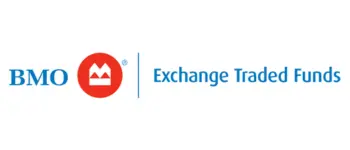These Dow Jones ETFs Allow Canadians to Diversify Beyond The TSX
Key takeaways
Income vs. Growth Strategies – While some ETFs focus on passive index tracking, others use covered call strategies to enhance income potential.
Dow Jones ETFs Offer Stability – These ETFs track the Dow Jones Industrial Average (DJIA), which includes 30 blue-chip U.S. companies known for strong financials and market influence.
Currency Hedging Options Matter – Canadian investors can choose between hedged and unhedged versions to manage currency risk against the U.S. dollar.
One ETF I like way better than the ones on this list.The Dow Jones is among the oldest stock market indexes in North America. It was launched in 1896 and has served as a prominent benchmark of the US economy for numerous years.
Not many people utilize the Dow Jones anymore as a benchmark index. Many analysts and fund managers use the S&P 500 or NASDAQ indexes as benchmarks, depending on what type of stock or fund they’re looking at.
The Dow Jones still has its uses, and many investors still utilize the index today.
What exactly is the Dow Jones Industrial Average?
The Dow Jones Industrial Average, or as many call it, “the Dow,” is a stock market index that aims to track the 30 most prominent companies in the United States. A notable thing about the Dow is that it is a “price-weighted index,” meaning a larger share price is favoured over a larger market capitalization.
Although the Dow can contain any particular type of stock, it contains some of the most prominent blue-chip stocks in the world, such as:
- Apple
- American Express
- Microsoft
- Home Depot
- Johnson & Johnson
- McDonalds
- Visa
As a result, many investors want exposure to the Dow, particularly those in Canada. We can do so through a handful of Canadian ETFs, and in this article I’ll tackle ones that cover the Dow Jones.
Keep in mind, depending on your brokerage commissions, you may be able to buy these commission free. Over the long run, this can definitely have an impact on investment results, so check to see if you can buy them for free.
Only two here are Canadian-listed, and they are both from the Bank of Montreal.
What are the top Dow Jones ETFs in Canada right now?
Currency-hedged exposure to U.S. blue-chip stocks
BMO Dow Jones Ind Avg Hdgd to CAD ETF (ZDJ.TO)

ZDJ.TO tracks the DJIA with a currency hedge to neutralize U.S. dollar fluctuations. This ETF offers Canadian investors direct exposure to America’s largest and most stable companies while reducing FX risk. It provides a cost-effective way to invest in the Dow Jones with passive index tracking.
Enhanced yield with a covered call strategy
BMO Covered Call DJIA Hedged to CAD ETF (ZWA.TO)

ZWA.TO also tracks the DJIA but employs a covered call strategy to generate additional income. This ETF is designed for investors seeking a balance between capital appreciation and consistent yield, making it a good choice for income-focused portfolios.
The most established and liquid Dow ETF
SPDR Dow Jones Industrial Average ETF Trust (DIA)

DIA is the flagship Dow Jones ETF, directly tracking the index without currency hedging. As one of the largest and most liquid ETFs globally, it offers straightforward access to 30 of the most significant U.S. companies, making it a core holding for investors seeking Dow exposure.
Overall, there aren’t many methods of gaining exposure, but these are 3 solid ones
BMO is an outstanding fund provider. I often look to it when thinking of a niche ETF I’d like to own. They have a covered call and non-covered call variant, which adds even more possibilities for Canadians looking for exposure to the Dow.
In terms of SPDR, it is one of the global leaders when it comes to Dow Jones ETFs, and if you are looking to buy in USD, you can’t really go wrong here. It all depends on your personal preference and your long-term goals.
With buying SPDR’s ETF, the accuracy of your returns may vary, as an investor’s shares in this ETF are not only exposed to movements of the Dow Jones, but currency fluctuations as well.
